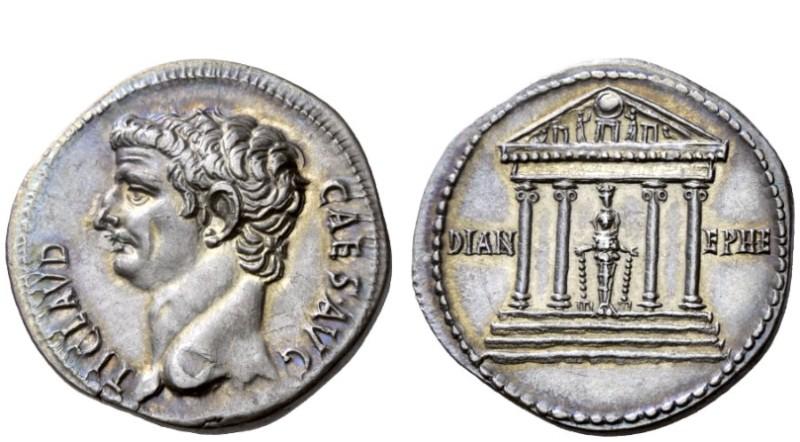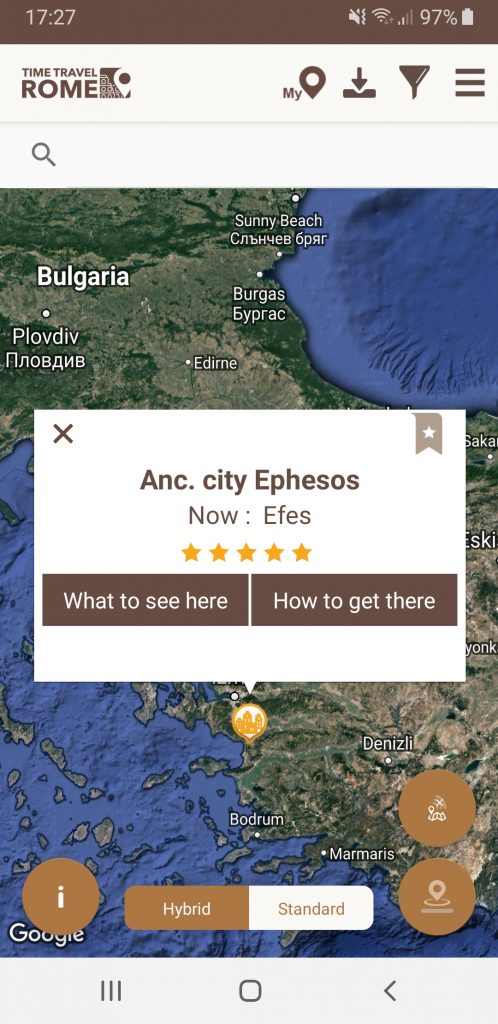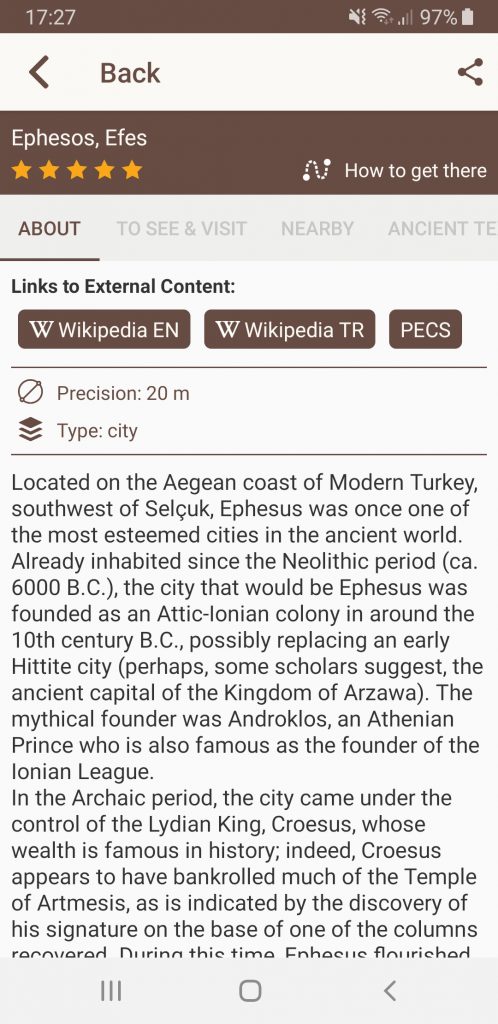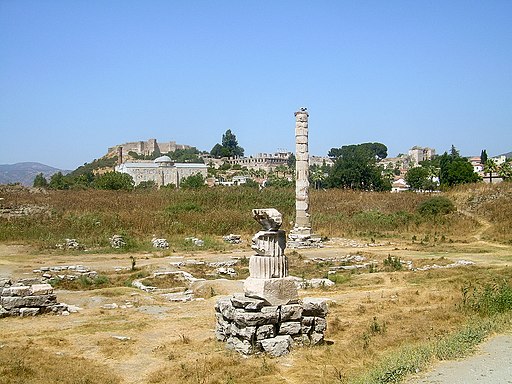Ephesus has a continuous and complex history which begun some nine thousand years ago. Ephesus location is very favourable, but the shoreline was constantly moving from east to west due to sedimentation, which led to several relocations of the city. Excavations have revealed splendid monuments of the Roman Imperial period including the Library of Celsus and the Great Theatre. But the most famous of all Ephesus monuments is the Temple of Artemis – one of the “Seven Wonders” of the Ancient World.
Ancient story of Ephesus
Ephesus is located on the Aegean coast of Modern Turkey, southwest of Selçuk. Ephesus area was inhabited since the Neolithic period (ca. 6000 B.C.) and was once one of the most esteemed cities in the ancient world. The mythical founder was an Athenian Prince Androklos. He is also famous as the founder of the Ionian League.
In the Archaic period, the city came under the control of the Lydian King, Croesus. He is most famous in history for his huge wealth. During this time, Ephesus flourished. The city was home to esteemed figures such as Heraclitus the philosopher. He famously said that a man could never set foot in the same river twice, the world being in a constant state of flux.
Hellenistic Kingdom conquered by Romans
Ephesus rebelled against Persian rule at the turn of the 5th century B.C. It was actually the trigger for the Ionian revolt and the Greco-Persian Wars. The city initially sided with Athens, but then later with Sparta. During the Hellenistic period, the city welcomed Alexander the Great’s triumphal entry, as he liberated the Greek cities of Asia Minor from Persian rule. After Alexander death, the city changed hands a few times between several rulers. The latest was Attalus III: after his death in 133 B.C., the Seleucid kingdom was bequeathed to the Roman Republic, and Ephesus became a Roman city.
Roman authority, and with it increased taxation, was not appreciated by locals. As a result, the Pontic King, Mithridates, was welcomed here. It is from Ephesus that he ordered the so-called Asiatic Vespers; the slaughter of Roman citizens in Asia. The city was duly punished when it was reclaimed for Rome by Sulla in 86 B.C.
Artemis Temple: one of the Seven Wonders of Antiquity
In antiquity, Ephesus was most famous for the Temple of Artemis (Artemision) that was located nearby. It is believed that the construction of the Temple was financed by Croesus. This is indicated by the discovery of his signature on the base of one of the columns. The Temple was so splendid, that it was considered as one of the Seven Wonders of the Ancient World. According to Pausanias it was also the largest structure of antiquity – larger by a few meters on a side than a modern football field – and it was the first Temple to be entirely of marble.
The Temple had taken some hundred twenty years to complete, but it was destroyed by fire in 356 BC, soon after completion. It was burned down by Herostratus, who immortalized his name in this infamous way. Ancient believed that the Temple could avoid the destruction, but its divine protector, Artemis, was absent from the shrine, assisting this very same day in the delivery of Alexander the Great…
The Temple was rebuilt soon, and stood there for centuries, in spite periodical earthquakes. But, unfortunately, it was burned again by the Goths in AD 262. After this event, and even before its definite closure by Theodosius I in AD 391, the site started serving as a quarry for building the Byzantine city at Ephesus. The remaining parts of the great Artemision were slowly sinking in marshy soils, and covered by alluvial deposits. The Temple no longer survives, but we know how it appeared in the past thanks to descriptions by ancient writers and to its depictions on ancient coins.
Artemis Temple : Ancient Coins tells the Story
Pliny mentioned that the temple had 127 columns, each some 18 meters high. Vitruvius described the Temple as dipteral octastyle: two rows of columns around the temple with eight on the front and rear façades. Thirty-six of columns, according to Pliny, were decorated with reliefs. This description is confirmed by the bronze medallion minted under Hadrian, shown below.
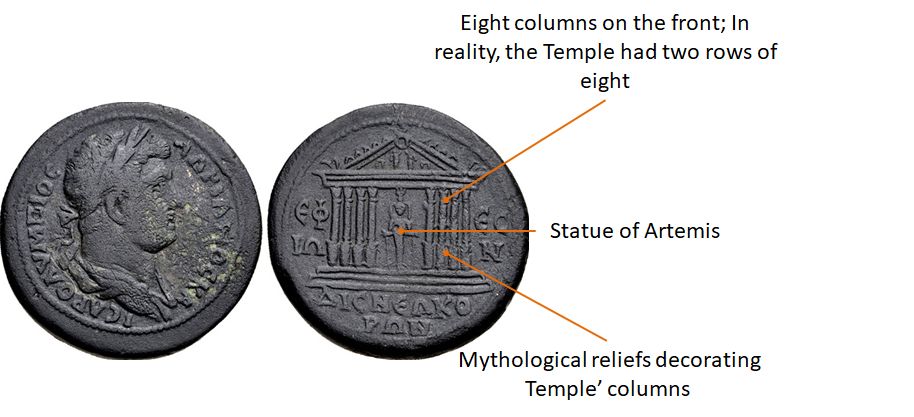
Pic 1: Ephesus. Hadrian. AD 117-138. Æ Medallion (36mm, 33.62 g, 12h). Struck AD 129. Source: Classical Numismatic Group, www.cngcoins.com, used by permission of CNG. Annotations by TTR.
The next coin below was minted some 100 years earlier, under Claudius. It is in an exceptional state of conservation and reveals interesting details of the temple’s architecture. One can see on Temple’s pediment three square openings or windows. Archaeologists don’ know the exact use of these windows: the goddess may have been displayed through them or they may have served to relieve the pressure of the structure. The reconstruction of the Temple in the Ephesus museum shows how they might have looked like in the past
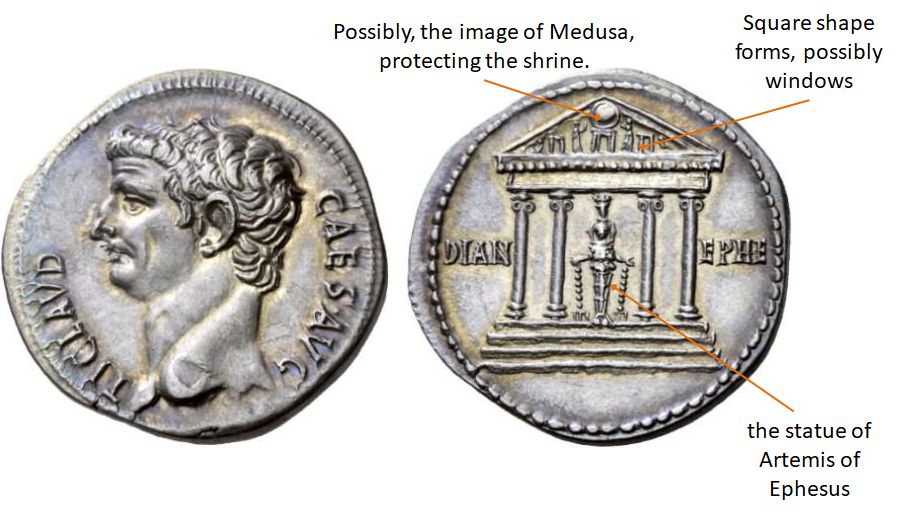
Artemis Festival and Symbols
The third coin shows how the statue of Artemis looked like. The Goddess wears a head-gear, the modius (or polos), symbolizing powers over fecundity. Indeed, Temple’s goddess was worshipped for fertility: during Artemisia festivals celebrated in March – April, men and women used to choose their fiancés; Ephesus festivals drew in both locals and foreign visitors. Below Goddess’ neck, one can see ‘breasts’ of Artemis. Nobody really knows what their meaning is. Some believe they depict eggs, breast, acorns, and, last but not least, testicles of bulls. Anyhow, the Ephesian Artemis was a very different version of the deity than Diana – the “usual” goddess of the hunt. She was worshipped in Ephesus for fertility, and this can be seen on ancient coins like this one:
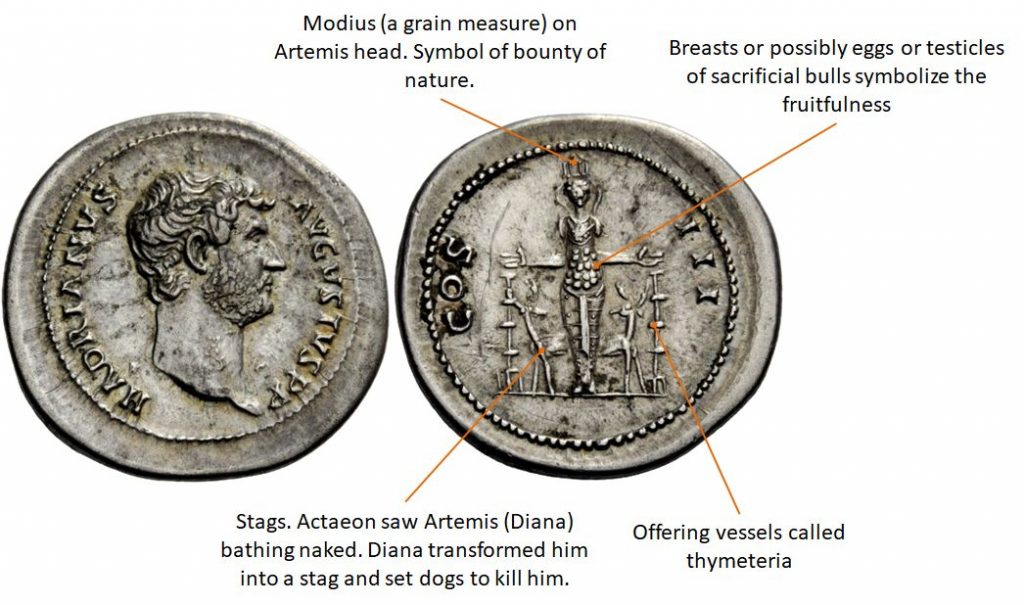
The city flourished with the advent of the Pax Romana, prospering as a city of considerable commercial wealth. It was destroyed by Goths in 262 A.D., during the so-called Third Century Crisis. This moment marked the beginning of the city’s decline, despite Constantine investing in its restoration. It endured as a significant Byzantine city, but its deterioration was accelerated by an earthquake in 614 A.D., and the progressive silting up of the Küçükmenderes River.
Artemis Temple in later antiquity
The city flourished with the advent of the Pax Romana, prospering as a city of considerable commercial wealth. It was destroyed by Goths in 262 A.D., during the so-called Third Century Crisis. This moment marked the beginning of the city’s decline, despite Constantine investing in its restoration. It endured as a significant Byzantine city, but its deterioration was accelerated by an earthquake in 614 A.D., and the progressive silting up of the Küçükmenderes River.
What to see there now
Ephesus is a splendid archaeological site in its own right and is designated as a UNESCO World Heritage Site. Unfortunately, the famous Temple of Artemis is less spectacular to see. It was built on marshy soils and was heavily damaged by earthquakes in antiquity. Today the Temple of Artemis is identifiable only by a single, rather inconspicuous, column, and the fragments of the frieze that are housed in both London and Istanbul. Besides the temple itself, we also recommend to see in Ephesus the Library of Celsus, which is a spectacular site in its own right. Built in 125 A.D. in memory of Julius Celsus Polemaeanus, the library once held an estimated 12,000 scrolls and was a monument to the ex-governor who patronised the library’s construction and is buried beneath. There is also a theatre with a capacity of around 25,000, making it one of the largest in the ancient world. Ephesus also contains the ruins of many of the recognisable aspects of ancient urban life. Several major bath houses accompany a couple of agoras, and an Odeon, as well as the remnants of the Temples of the Sebastoi (dedicated to the Flavian imperial dynasty) and the Temple of Hadrian.
Archaeological remains from Ephesus are displayed variously, including at the Ephesus Museum in Vienna, the Ephesus Archaeological Museum in Selçuk, and in the British Museum.
Written for Timetravelrome by Kieren Johns, with additions and edits by TTR.
For primary accounts of Ephesus, see:
Strabo, Geography, 14.1.24
Pausanias, Description of Greece, 4.31.8
